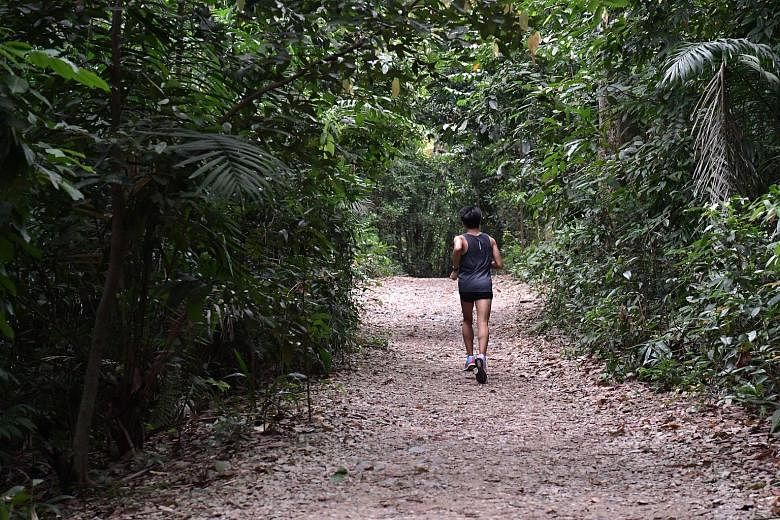For a small group of people in Singapore, exercise is not something their doctor would recommend lightly.
One example is 15-year-old Dan (not his real name), who was rushed to hospital two years ago with hives, facial swelling and tightness in the throat. He was also wheezing.
He had never had an allergy to prawns, which was what he had eaten at dinner.
Nor had he ever reacted badly to playing basketball, which was what he had done about half an hour after eating the prawns.
Dr Elizabeth Tham, an associate consultant at the division of paediatric allergy, immunology and rheumatology at National University Hospital, realised that it was a combination of the two that had brought on the attack.
Dan was diagnosed with food- dependent exercise-induced anaphylaxis.
Dr Tham told him not to exercise two to four hours before or after eating shellfish.
Dan followed her instructions and probably never had a reaction like that again.
In food-dependent exercise- induced anaphylaxis - a subset of exercise-induced anaphylaxis - the reaction occurs only if physical activity takes place within a few hours of the intake of a specific food.
In Asian patients, it is typically wheat or shellfish.
Other foods like peanut, tomato, apple and corn have been reported in Western populations, said Dr Tham.
Physical activity alone, or eating the food alone, does not cause anaphylaxis, she said.
People with suspected exercise- induced anaphylaxis should seek medical attention immediately when symptoms appear and consult a doctor specialising in allergy for a definitive diagnosis.
Occasionally, an exercise challenge test under a doctor's supervision might be indicated, she said. This is where a patient is put through physical activity while being monitored, in order to test his allergic reaction.
Exercise-induced anaphylaxis is rare.
It has been reported as a cause in 2 to 7 per cent of all patients with anaphylaxis in Britain, Europe and the United States, said Dr Tham.
The prevalence in Singapore is unknown.
"In many cases, the diagnosis may be missed or diagnosed as being idiopathic (no known cause)," she said.
It occurs more often in adolescents and adults and rarely in children, she added.
Symptoms may include hives and itchy skin, swelling in the eyes or mouth, difficulty in breathing or wheezing, and gastrointestinal symptoms like vomiting, abdominal pain and diarrhoea, she said.
Dr Adrian Chan, a consultant in the respiratory and critical care medicine department at Singapore General Hospital, said allergic reactions following exercise may include swelling in the body, known as angioedema, or a drop in blood pressure, especially after vigorous physical activity.
Exercise allergy is often difficult to diagnose as many people may experience similar symptoms during exercise and may put it down to the lack of fitness or an asthmatic attack, said Dr Tham.
Exercise-induced anaphylactic attacks are also not always triggered by the same type or intensity of exercise each time.
Eating certain foods and drinking alcohol, the temperature of the surroundings, drugs such as aspirin or non-steroidal anti-inflammatory medication, and hormonal changes can also affect a person's risk of developing such a reaction during exercise, she added.
Joyce Teo


